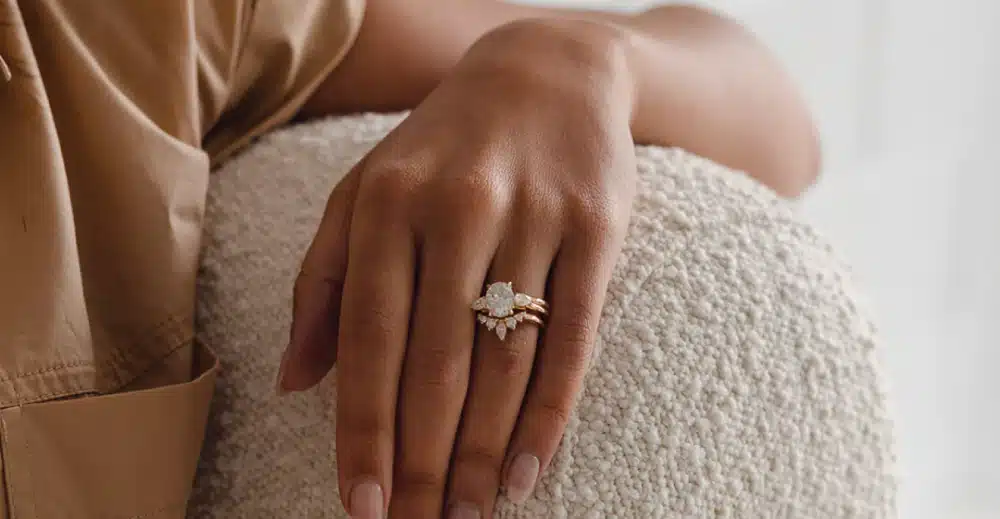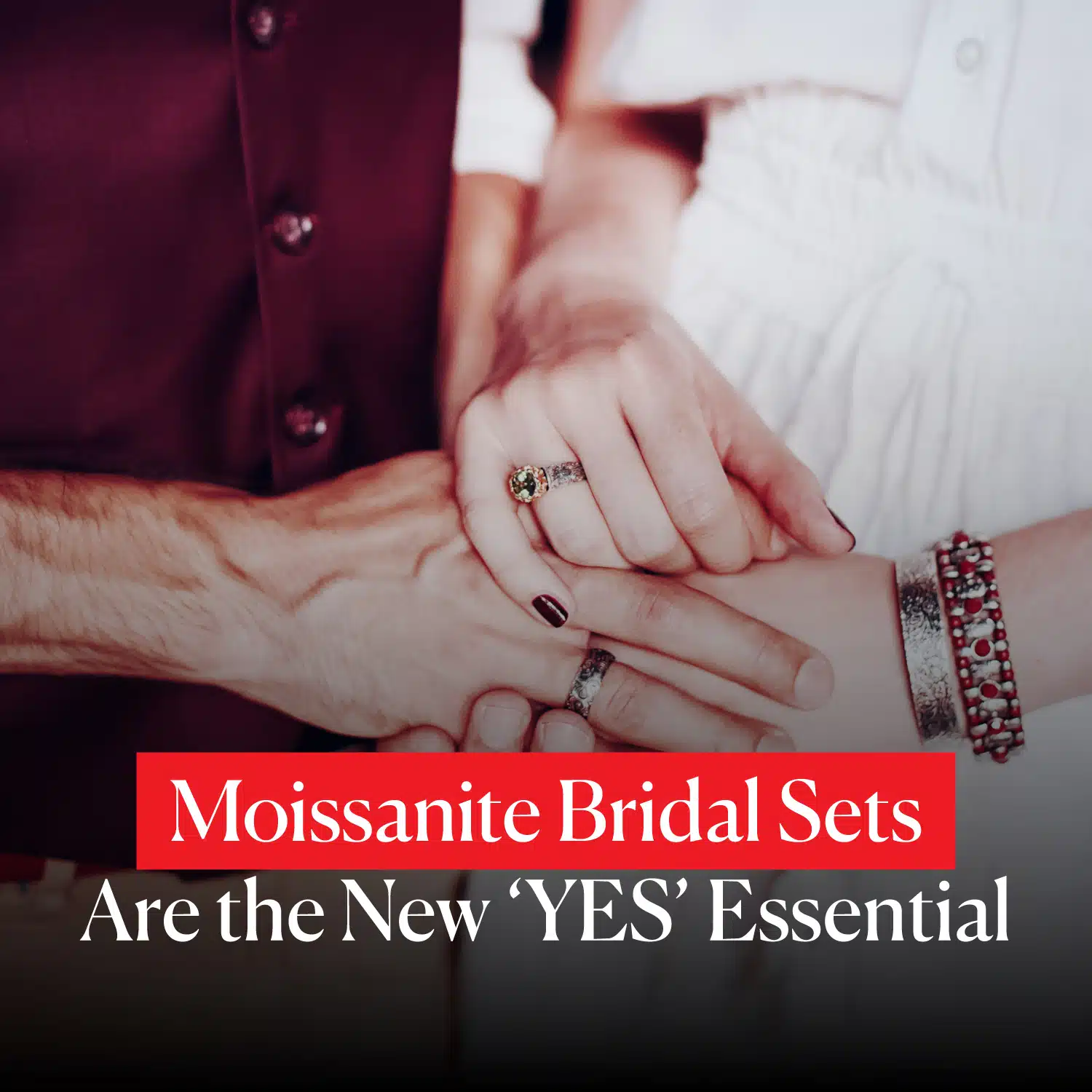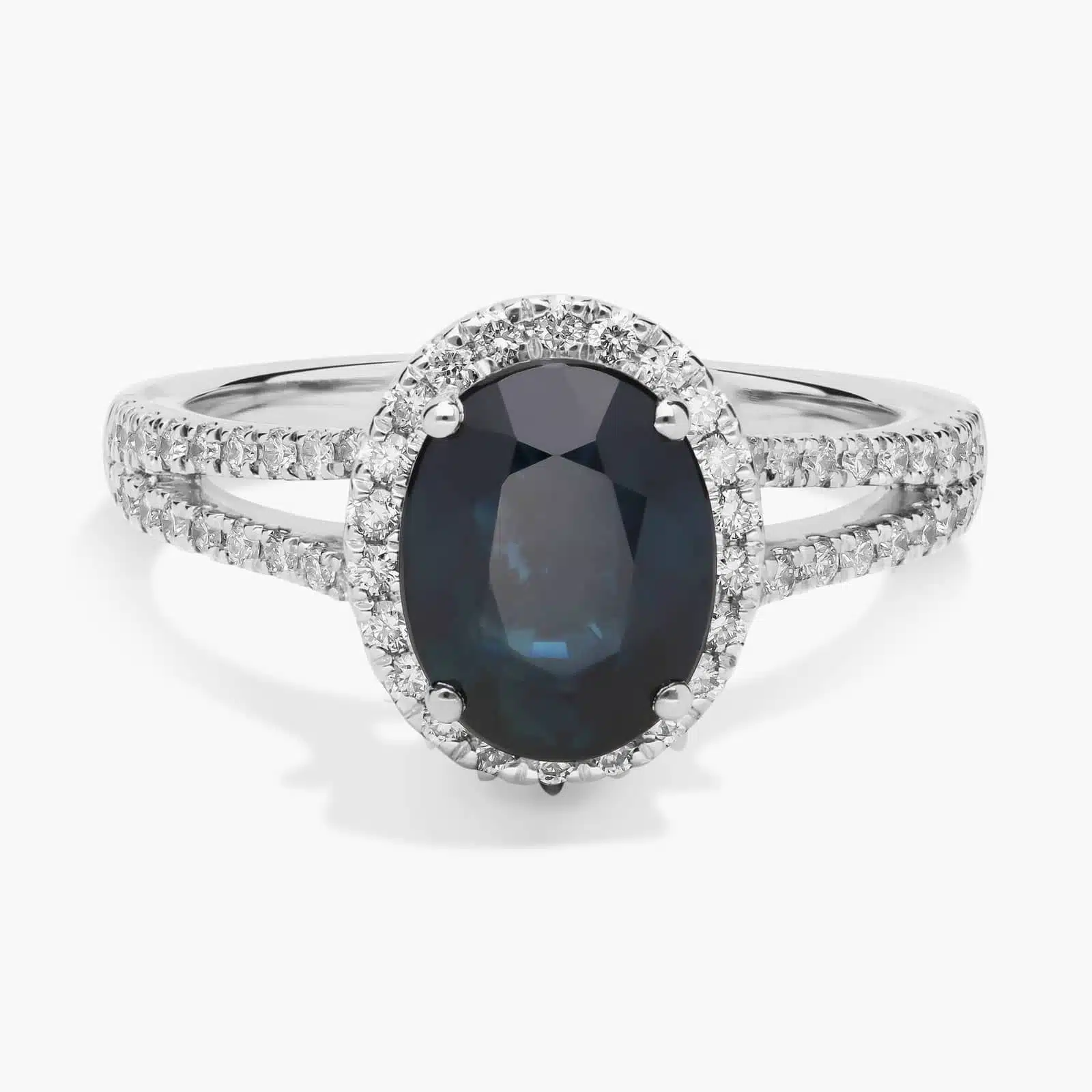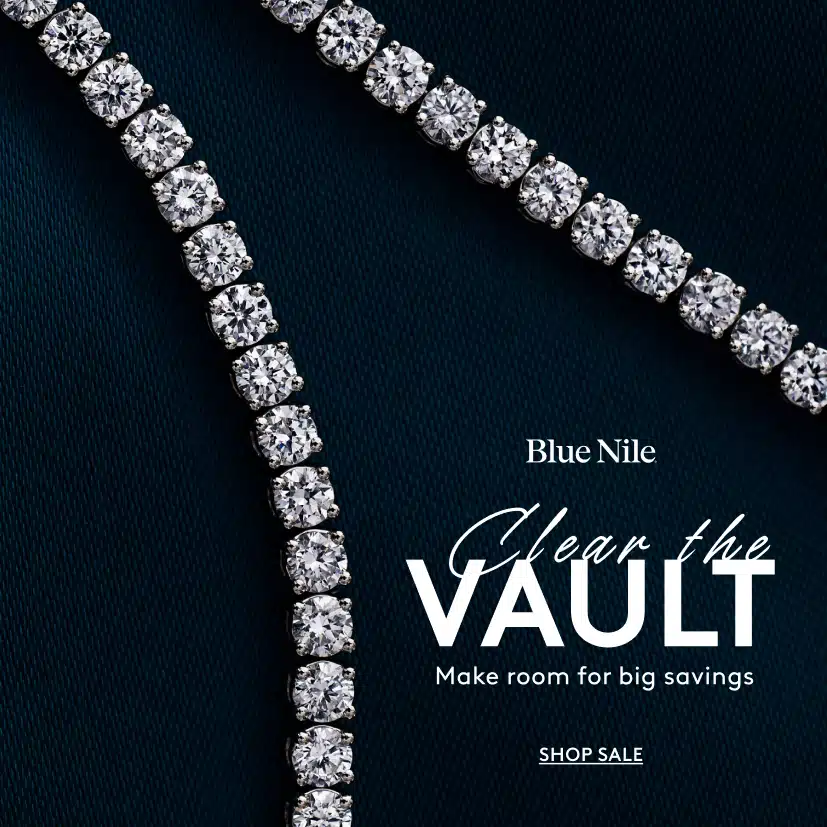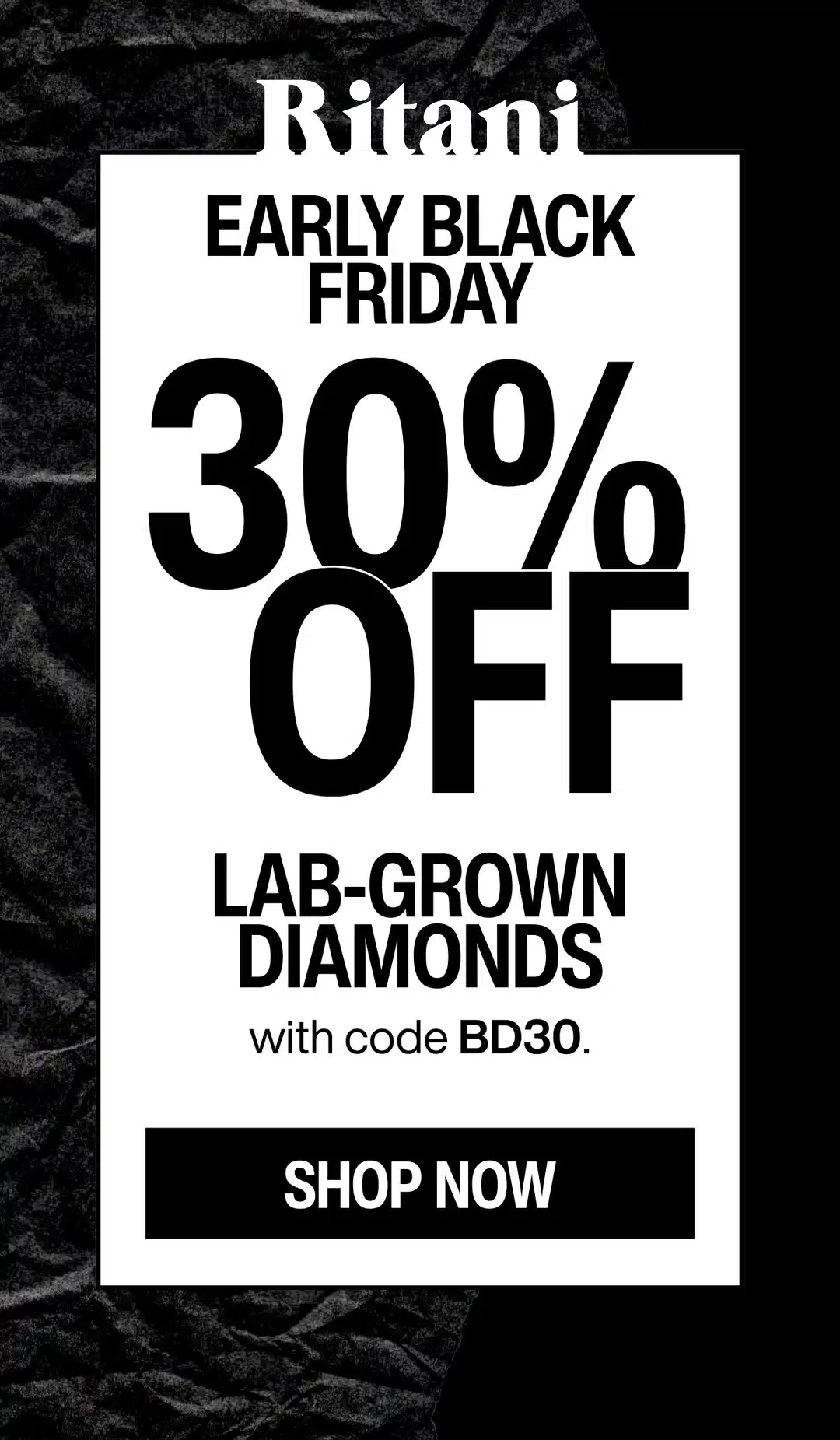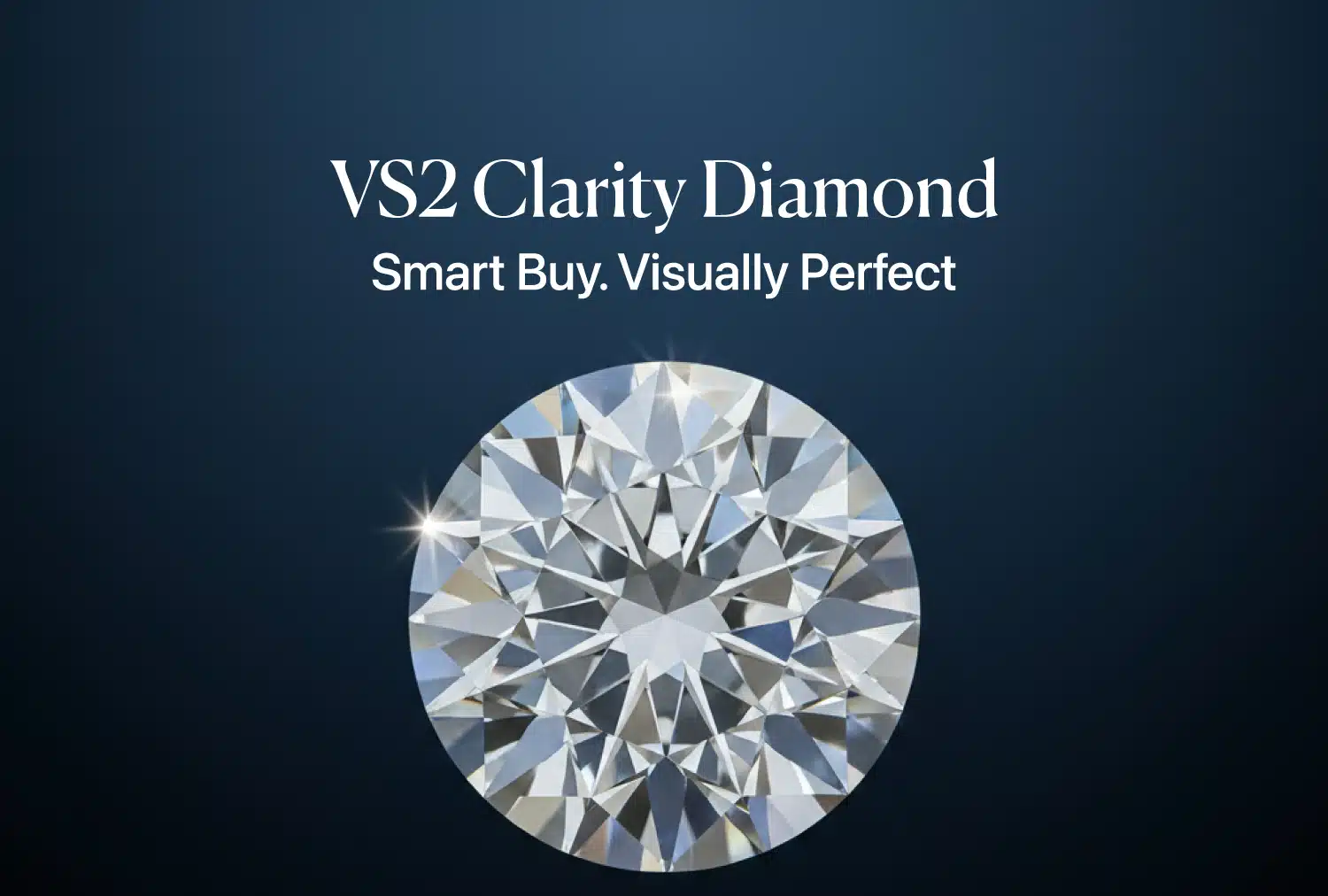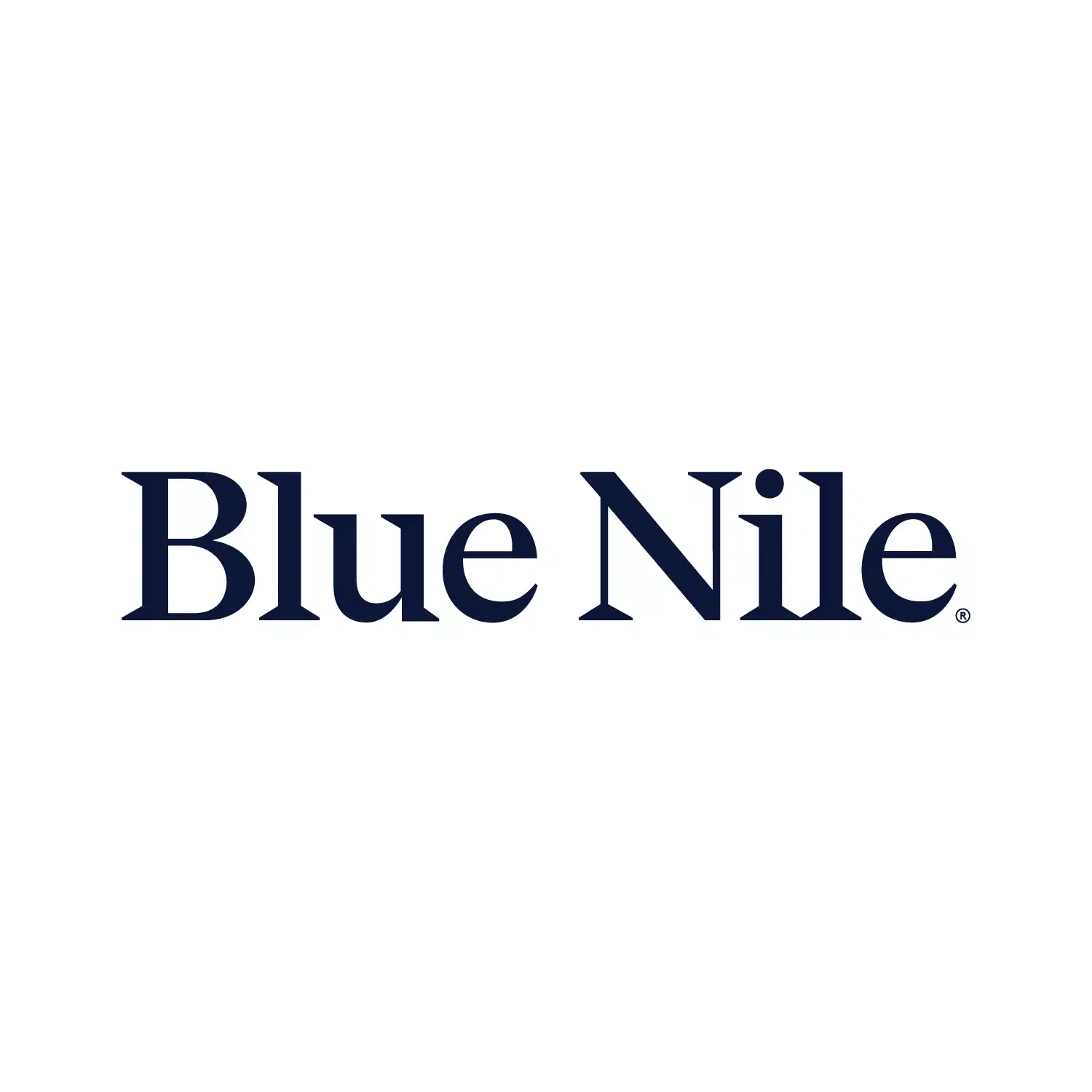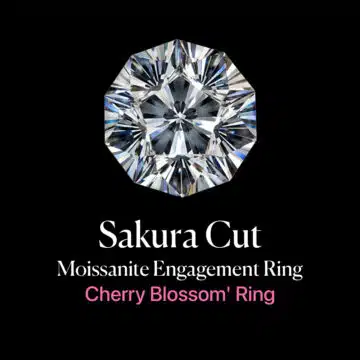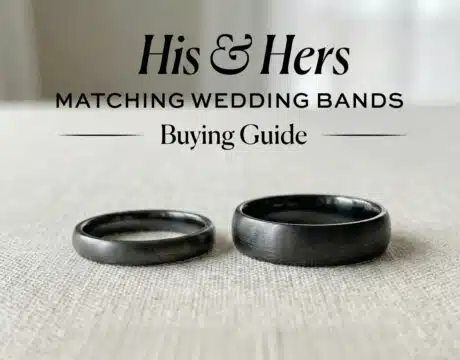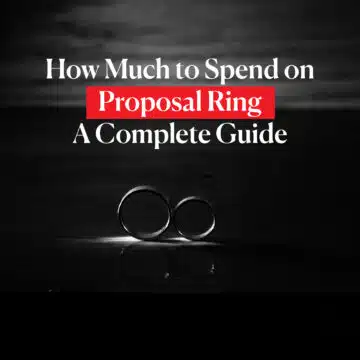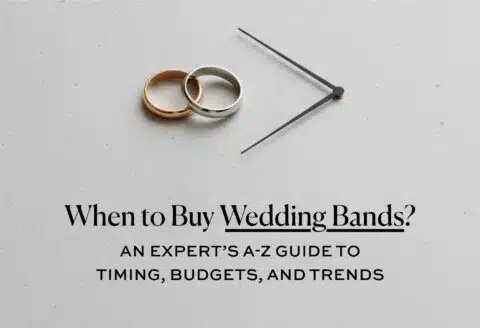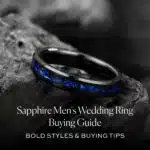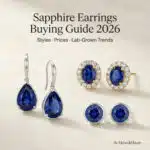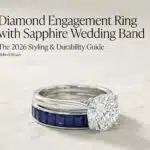Yes, a well-chosen, GIA-certified VS2 diamond is not just good; it is the single most powerful value proposition for a savvy buyer who wants a visually flawless diamond for a fraction of the cost of higher grades.
You’re deep in your diamond search. Your heart is set on a big, beautiful stone, but your budget is telling you a different story. The “near-flawless” VVS grades feel out of reach. So you start looking at the VS tier, and a question floods your mind: Is a VS2 diamond good enough? Is it a smart compromise, or a risky gamble?
Deal Alert: Fast-Shipping Gifts — Up to 50% Off* fine jewelry at Blue Nile !
One In A Lifetime Sale: “Clear The Vault” – Get up to 70% OFF on select jewelry at Blue Nile !
Exclusive Offer: Flash Sale on James Allen Up to 40% Off * Sitewide engagement ring settings & Fine Jewelry at James Allen .
As a GIA-trained jeweler, I’m here to tell you it’s both. A great VS2 is the secret weapon of the smart shopper. A bad one is a heartbreaking mistake. Today, I’m not just going to define the grade; I’m going to give you the expert’s playbook for how to find the brilliant buys and avoid the duds.
Diamond IQ Test: Natural or Lab-Grown?
Two identical diamonds: GIA Certified, 1.51ct, D Color, VVS1, Ideal Cut. One is natural ($16,530), the other is lab-grown ($2,390). Choose the diamond you like better and see if you can match it to its origin.
What is VS2 Clarity in a Diamond? A Jeweler’s Definition
Before we can even talk about whether a VS2 diamond is a smart buy for your wallet, we need to decode the jargon. In the sometimes intimidating world of GIA reports, “VS2” is one of the most important—and most misunderstood—grades you will ever see.
So, let’s pull back the curtain and answer the core question: what does vs2 mean in diamonds, and why is this specific grade the secret key to getting a visually perfect ring without overspending?
The GIA’s Official Definition (And What it Feels Like in Reality)
The official vs2 clarity meaning, as defined by the Gemological Institute of America (GIA), is “Very Slightly Included – Second Degree.” But let’s be honest, that’s just cold, clinical jeweler-speak. It doesn’t capture the true reality of what this grade represents for you, the buyer.
To understand it, you need to picture what happens inside a GIA lab, a process I explain in minute detail in my guide, What Does GIA Certified Mean?. A highly trained gemologist, using a powerful 10x magnification loupe, meticulously scans every millimeter of the stone for any internal characteristics, or “inclusions.”
For a diamond vs2 clarity to earn its grade, a skilled grader can easily see the minor inclusions under 10x magnification.
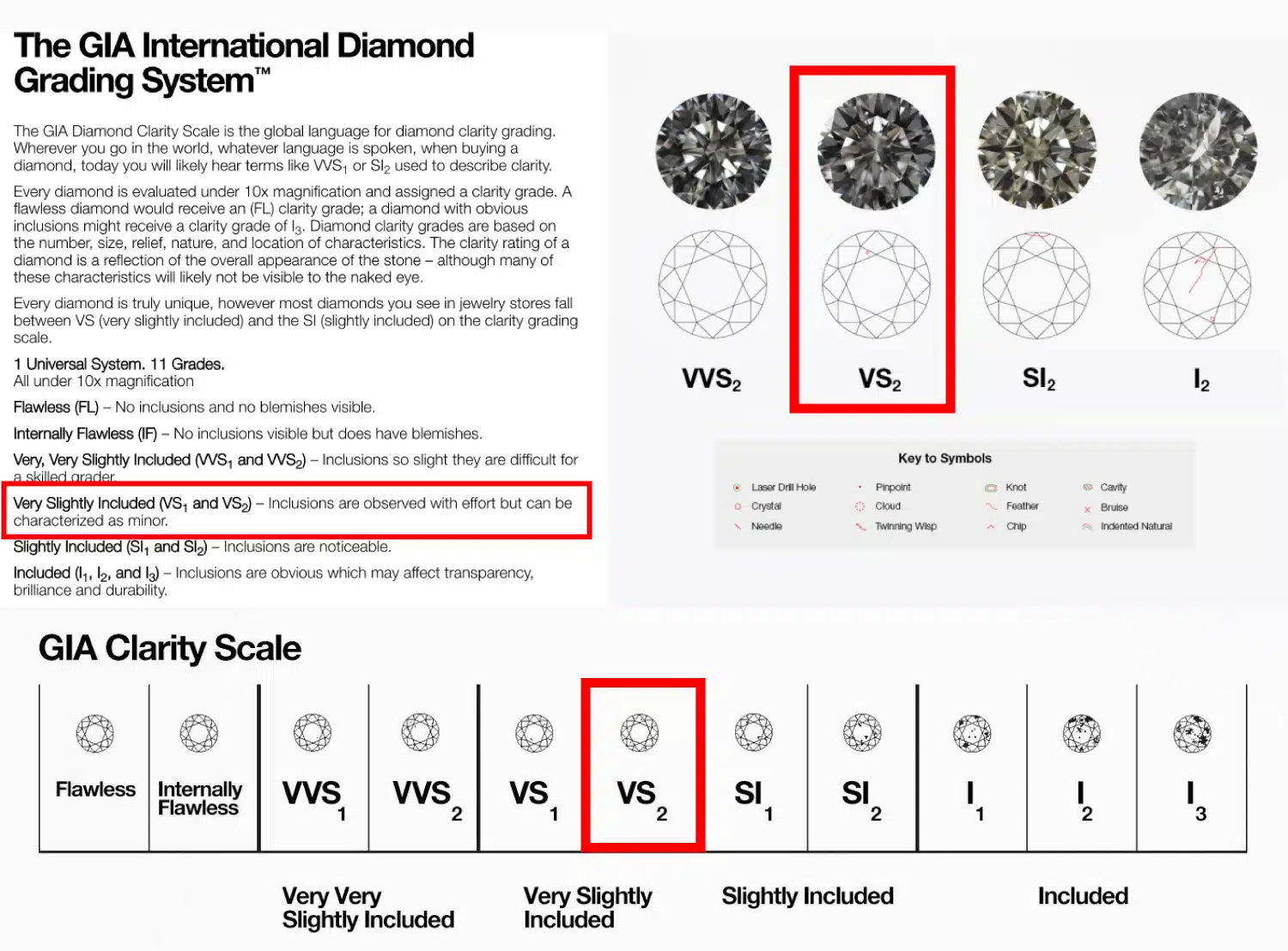
Here’s the best analogy I can give you: Imagine a few tiny specks of salt have fallen onto a large, clean white carpet. A professional cleaner, down on their hands and knees with a magnifying glass, is going to spot them right away. But you, standing up at a normal distance, just see a perfectly clean, beautiful carpet.
This is the entire essence of what is vs2 clarity in a diamond:
- The flaws are significant enough for an expert to find easily under magnification.
- But for the vast majority of stones, they are completely invisible to your naked eye in the real world.
So, let’s answer the big question head-on: is a vs2 diamond good? Yes, a well-chosen one isn’t just good; it’s a brilliant, strategic, and often victorious choice for your budget. The key is knowing if those ‘specks of salt’ are in the middle of the room or tucked away in a corner, which we’ll get to.
The Official VS2 Diamond Chart: Pinpointing the Value Zone
To truly understand why the VS2 diamond is so powerful, you have to see where it lives. It doesn’t exist in a vacuum; it sits on a map of rarity and value that governs the entire global diamond market. I like to think of this vs2 diamond chart not as a list, but as a series of different “neighborhoods.”
| Clarity Tier | GIA Grade | Mehedi’s Take |
| Flawless Tier | FL / IF | The Collector’s Grade. The pinnacle of rarity. |
| VVS Tier | VVS1 / VVS2 | The “Near-Flawless” Grades. Technically magnificent. |
| VS Tier | VS1 / VS2 | The Smart Buyer’s “Sweet Spot.” Visually perfect. |
| SI Tier | SI1 / SI2 | The Value Hunter’s Grade. Can be “eye-clean.” |
This chart is the key to understanding what is vs2 clarity in the context of the entire market, a topic I cover in my overarching Diamond Grading Chart: The 4 Cs of Diamonds guide.
- The Flawless & VVS Tiers: Think of these as the billionaire’s penthouses. They are magnificent, technically perfect, and carry a massive price tag for that on-paper perfection. My guides on VVS1 and VVS2 diamonds explore these “peace of mind” grades in detail.
- The SI Tier: This is the value hunter’s neighborhood. You can find some incredible, eye-clean deals here in the SI1 clarity diamond grade, but it requires a very careful, expert-level inspection.
And then there’s the VS Tier, the sweet spot where the smart money lives. It’s the perfect balance of guaranteed “eye-clean” beauty and intelligent, real-world value.
If VS1 clarity diamond is the safest bet in this neighborhood, the clarity vs2 grade is the entry point—the gateway to the world of smart, high-value, and visually flawless diamonds. For a savvy shopper, this is one of the most exciting places to be.
The $5,000 Question: Is There a Visible Difference?
Alright, this is the heart of it. This is where we stop talking about jeweler’s loupes and start talking about real money, real choices, and the single most important secret in the diamond business. You’re in the final stretch, looking at three GIA-certified diamonds that all appear perfect on your screen, yet their prices are worlds apart.
Welcome to the triple-threat showdown: the ultimate battle between VVS2, VS1, and VS2. It’s the championship match for “eye-clean” diamonds, and I’m going to give you a ringside seat to the action so you can make a knockout decision.
The Holy Grail of Diamond Buying: “Eye-Clean”
Before we look at a single diamond, I need you to commit my #1, unbreakable, golden rule for diamond clarity to heart: your goal is not to buy a flawless diamond; your goal is to buy a diamond that is “eye-clean.”
An “eye-clean” diamond is a stone with absolutely no inclusions or flaws that are visible to your naked eye from a normal viewing distance. That’s it. That’s the holy grail. You don’t get extra points or a more beautiful ring for paying a massive premium for a level of microscopic purity that only a GIA gemologist can appreciate.
And here is the most important secret I can share with you: a GIA-certified VVS2, a well-chosen VS1 diamond, and a great clarity VS2 are all 100% eye-clean.
As one savvy Reddit user, TravelerOfSwords, brilliantly put it:
“I have a VS1 and it looks flawless. So to me, why would you spend more to get a VVS when no one will be able to tell the difference anyway, you know? Just to be able to say that it’s a VVS?”
He is absolutely right. As I explain in my definitive guide, What Is The Best Diamond Clarity?, the game isn’t about buying the “best” grade on paper; it’s about buying the best-looking stone for the best possible price. The difference between vs1 and vs2 and vvs2 is often a story told on a receipt, not on a finger.
A Head-to-Head Price Test: The $4,500 You Cannot See
Let’s make this brutally, tangibly real. We’re going to go shopping right now. Our mission is to build a classic, significant engagement ring with a 1.50 carat, G-color, Excellent Cut Round Diamond. The only thing we’ll change is the clarity grade.
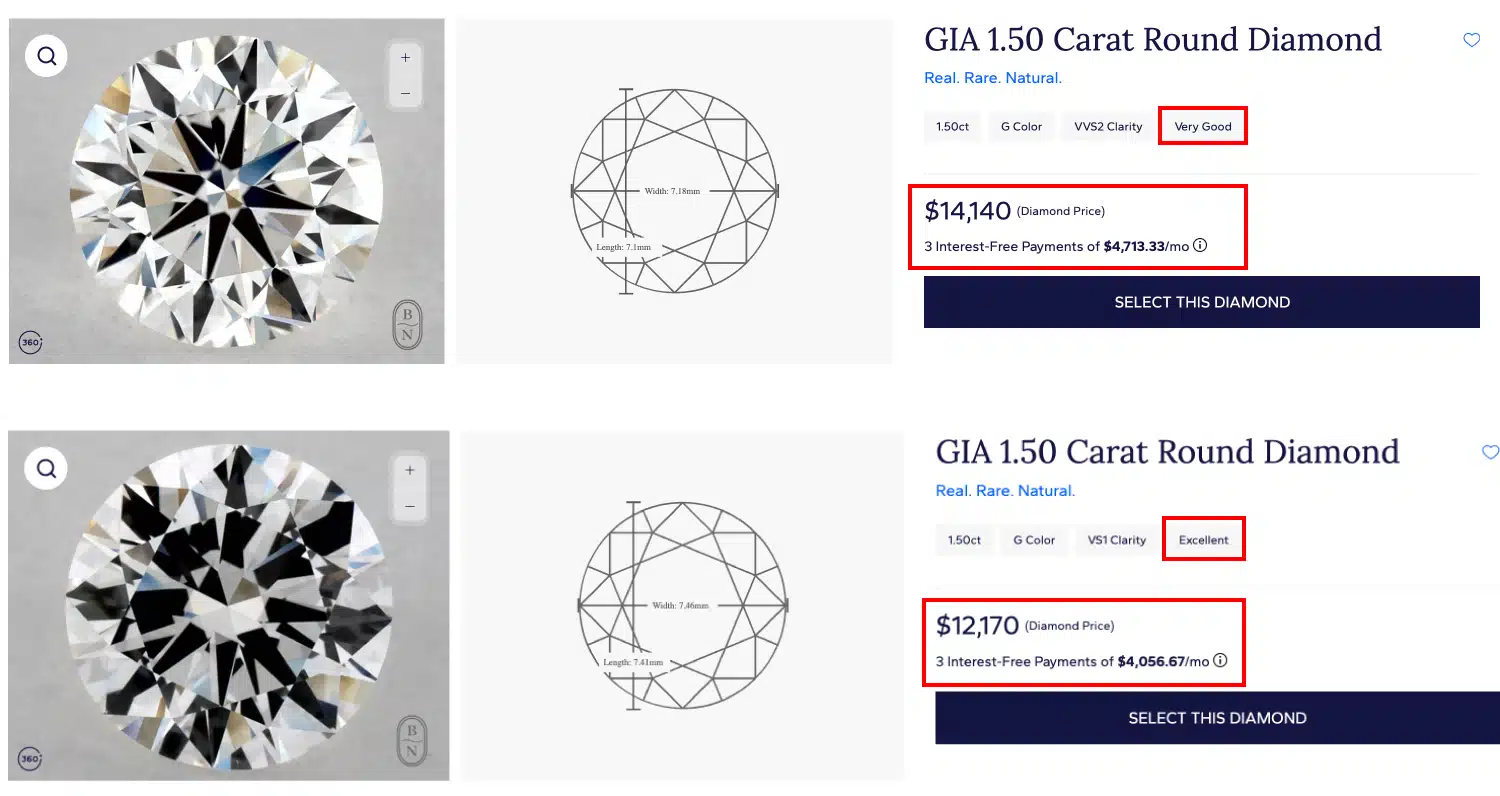
First, let’s look at the top of our range.
- We’re on Blue Nile, and we find a stunning 1.50 Carat, G-Color, VVS2-Clarity Diamond. I open the 360° video. The stone is a pristine, brilliant sheet of ice. It is magnificent.
- The Price: $14,140. For this on-paper, “near-flawless” peace of mind, this is your benchmark.
Now, let’s hunt for value with the champion of the “sweet spot.”
- We find a beautiful 1.50 Carat, G-Color, VS1-Clarity Diamond. I pull up its 360° video. To my naked eye—and to yours—it is perfectly identical to the VVS2. Price is $12,170.
- The Price: By choosing the VS2 stone that is visually perfect instead of the VVS2/VS1 that is technically perfect, you’ve just put $2,000 back in your pocket.
Best Deal Of The Year – Final Days
Blue Nile’s “Clear The Vault” is ON.
Shop Fine Jewelry Upto 70% OFF.
*Exclusions may apply. See Blue Nile for complete details.
But this is where the real win happens. Let’s find a great vs2 g color diamond.
- We jump over to James Allen to use their legendary “SuperZoom” technology. We find a gorgeous 1.50 Carat, G-Color, VS2-Clarity Diamond. I use the GIA report to find the VS2 inclusion—a small, transparent feather off to the side, completely camouflaged by the sparkle. To your eye, it is, once again, flawlessly, perfectly identical to the VVS2 and the VS1.
- The Price: $10,280.
Let that sink in. By making an informed, confident decision, you have just found a visually identical diamond and saved an incredible $4,000. This is the power of savvy shopping. You haven’t compromised on beauty; you have won on value.
This proves that while the answer to “is vs1 or vs2 better?” is a technical “yes,” the VS2 is often the financial victor. For an even more granular look at the nuances, my deep-dive VS1 vs. VS2 Diamond guide is your next stop.
What a VS2 Diamond Should Cost: Natural Rarity vs. Lab Accessibility
Alright, so we’ve established that a well-chosen VS2 clarity diamond is the savvy buyer’s secret weapon for getting a visually flawless look. But now we get to the most important question of all: what should you actually expect to pay for one?
This is where the diamond market splits into two completely different universes, a truth that many old-school jewelers don’t want you to know. The price of a VS2 is not one story; it’s a tale of two origins. And understanding this colossal difference is the final key to unlocking the perfect vs2 diamond ring for your budget.
Let’s break down the numbers, and I promise you, what you’re about to see will change the way you think about value forever.
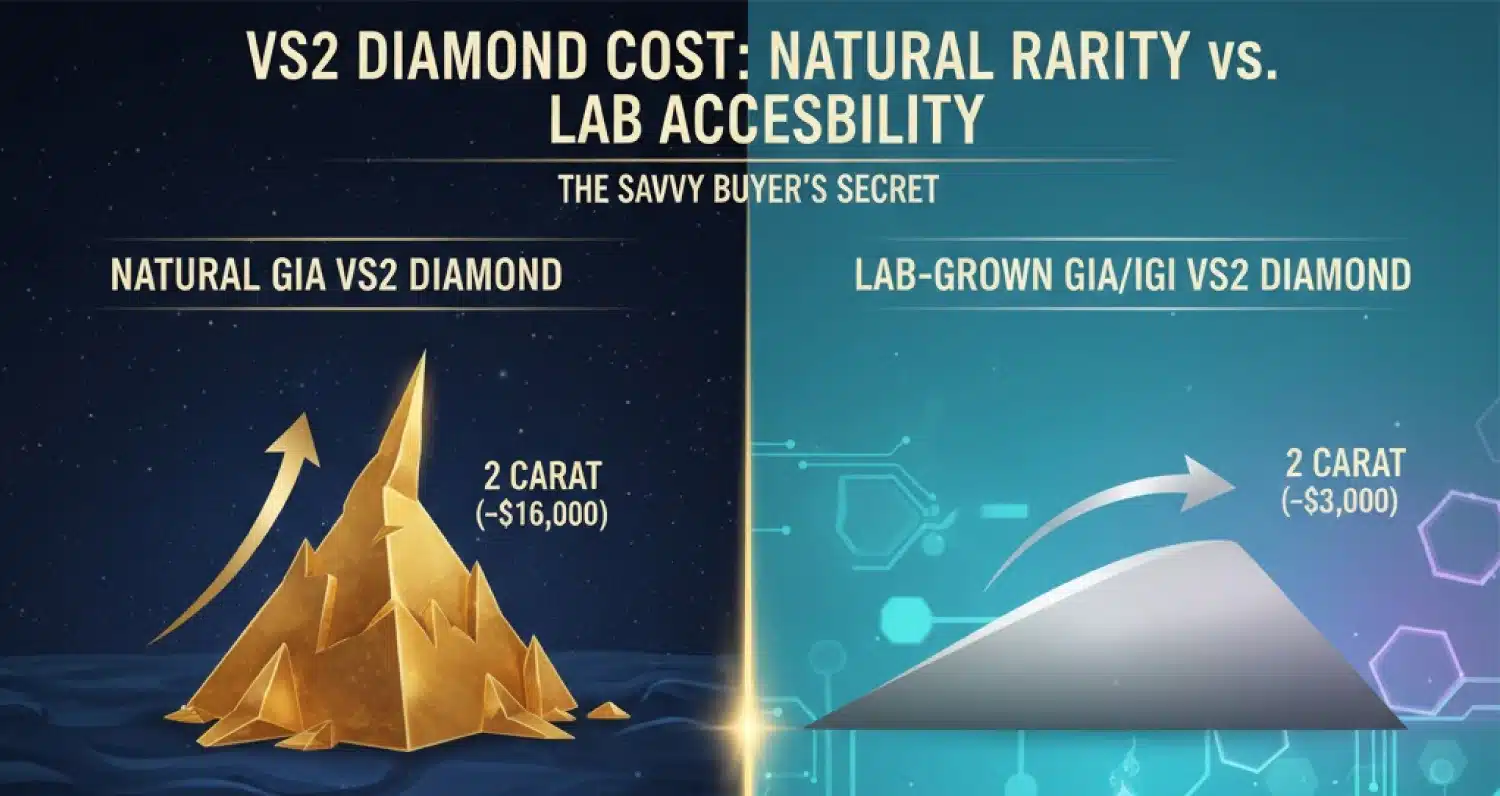
The Cost of a Natural GIA VS2 Diamond: The Price of a Miracle
When you are looking at the price of a natural VS2 diamond, you are not just paying for quality; you are paying for a geological miracle. To find a beautiful, eye-clean diamond crystal of a significant size that was formed over a billion years in the earth’s mantle is an incredible feat of nature.
As the carat weight of that miracle increases, its rarity becomes exponentially more significant, and the price climbs a very, very steep pyramid.
Here’s what that pyramid looks like in the real world.
Natural GIA VS2 Diamond Price (Approximate – H Color, Excellent Cut)
| Carat Weight | 1 carat vs2 diamond price (approx.) | 2 carat vs2 diamond price (approx.) |
| (H Color) | ~$4,500 | ~$16,000 |
Look closely at those numbers. The vs2 diamond price doesn’t just double when you double the size; in this case, it more than triples. That jump is the price of rarity. For a 1 carat diamond ring vs2, the cost is an achievable luxury.
But once you start looking at a 2 carat diamond, you are deep into “luxury car” territory. You are paying a premium for the magic, the legacy, and the sheer unlikeliness of that stone’s existence.
For a perfect illustration of this, go to Blue Nile right now. Find a beautiful 1.00 Carat, H-Color, VS2 Diamond. Note its price. Then, change only the carat weight filter to 2.00. The jaw-dropping number you see is the power of rarity in action, a concept I explore in my article on how diamond prices are dropping for some categories but holding strong for rare, natural stones.
The Cost of a Lab-Grown GIA/IGI VS2 Diamond: The Power of Smart Science
Now, I want you to prepare for a completely different reality. This is the part that has turned the entire jewelry industry on its head. A lab-grown VS2 diamond is a masterpiece of human ingenuity, not a fluke of geology. Because they can be created with precision and consistency, the old pricing model based on rarity is completely shattered.
The steep pyramid collapses into a gentle, sloping hill of accessibility. This is where the vs2 diamond quality becomes an unbelievable, breathtaking bargain.
Here’s what that looks like on a price chart.
Lab-Grown GIA/IGI VS2 Diamond Price (Approximate – Round Brilliant)
| Carat Weight | Price (H Color) | Price (Upgraded G/F Color) |
| 1.0 Carat | ~$900 | ~$1,100 |
| 2.0 Carat | ~$2,500 | ~$3,000 |
Let these numbers sink in for a moment. This is the unspoken truth of the modern diamond market laid bare. The implications are staggering, and this is what every smart buyer needs to understand.
- A stunning, eye-clean, 2 carat vs2 lab grown diamond costs thousands of dollars less than a smaller, 1-carat natural diamond of the same quality.
- The “premium” for upgrading to a higher color grade, like a beautiful g color vs2 diamond or a stunning f color diamond vs2, is tiny. It’s an accessible luxury, not a massive financial leap.
- This incredible value completely changes what’s possible for your budget. The savvy shopper isn’t just saving money; they are getting a bigger, better, and more beautiful ring than they ever thought possible.
Think about it this way. For less than the price of that single 1.50 carat, H-color natural vs1 vs vs2 diamond we discussed, you could go to James Allen and build a breathtaking James Allen 4-Carat Diamond Ring with an F-Color, VS2 lab-grown diamond and still have thousands of dollars left over.
James Allen: Our 5-Star Choice for Price and Selection
Check our comprehensive James Allen Review to learn more about their pricing and commitment.
The bottom line is this: a vs2 lab grown diamond isn’t just a “good value.” It is a revolutionary choice, a smart-money move made possible by the incredible selection at the best places to buy engagement rings online. It’s the secret to getting a champagne look on a beer budget.
When a VS2 is a Risky Gamble, Not a Smart Buy
Okay, for the past ten minutes, I’ve been singing the praises of the VS2 grade. I’ve called it the “savvy shopper’s victory,” a secret weapon for incredible value. And for ninety percent of the diamonds you will look at, that is the absolute, unshakeable truth.
But as your friend and GIA-trained expert in this business, my job isn’t just to give you the rules; my job is to teach you the exceptions. Because in those last ten percent of cases, a VS2 is not a smart buy. It’s a heartbreaking mistake.
There are three specific scenarios where a vs2 diamond quality grade is not a guaranteed slam dunk, and where you, as a newly empowered buyer, need to bring an extra level of expert scrutiny to your search. This is the advanced class. Let’s dive in.
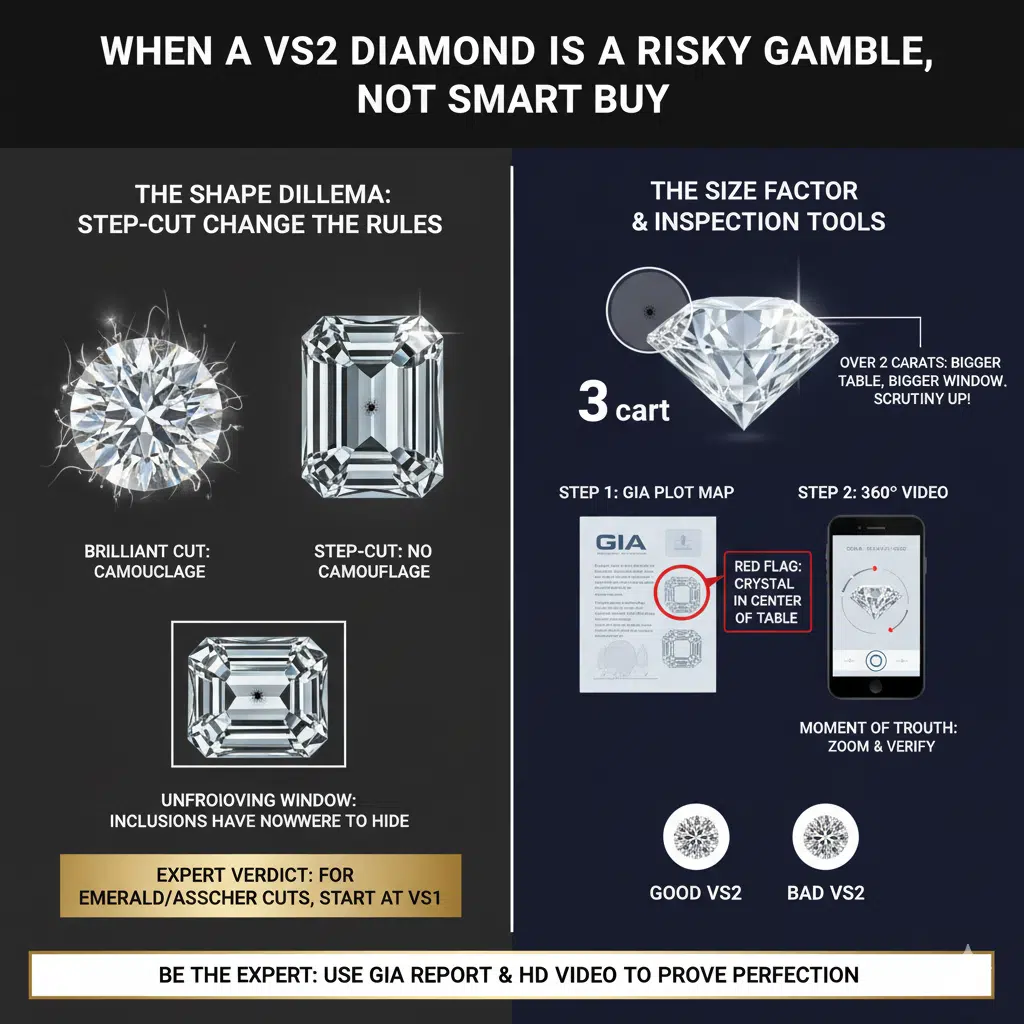
The Shape Dilemma: Why Step-Cuts Change All the Rules
This is the most important exception, the one that can save you from the most common and painful mistake. The reason a VS2 works so beautifully in a Round Brilliant Cut Diamond or a fiery Pear Shaped Diamond is because their “brilliant” faceting style is a chaotic blizzard of sparkle that is a master of camouflage.
A step-cut has no camouflage. It is a completely different animal.
Shapes like the elegant and architectural Emerald Cut Diamond and its stunning cousin, the Asscher Cut, are designed with long, clean, linear facets. This creates a mesmerizing, glassy “hall-of-mirrors” effect.
- They Are Unforgiving Windows: They don’t have fiery sparkle to distract the eye. Instead, they give you a clear, unobstructed, top-down view deep into the heart of the stone.
- Inclusions Have Nowhere to Hide: A tiny black crystal that would be completely swallowed by the sparkle of a round brilliant can suddenly look like a speck of pepper on a clean, white plate in the middle of an emerald cut.
This is a hard-learned lesson that savvy shoppers on Reddit have shared. As one user wisely advised another who was considering a step-cut stone:
“With an emerald cut I’d go for the better clarity rating.”
My Expert Verdict: This user is absolutely right, and as your jeweler, I’m telling you to take that advice to heart. While some vs2 diamonds in a step-cut can be eye-clean, the risk is significantly higher.
For these shapes, I always advise my clients to make VS1 their starting point. The extra cost is a worthwhile insurance policy for a perfectly, undeniably clean window.
The Size Factor: Inspecting Diamonds Over 2.0 Carats
The same logic applies when you start to enter the world of truly massive diamonds. As a diamond’s carat weight increases, its physical size—especially its “table” (the main top facet)—grows as well. And a bigger table means a bigger window.
As a Reddit gemologist pointed out in a thread discussing a 3 carat diamond, a VS-grade that is perfectly eye-clean at one carat may not be at a larger size:
you can have a VS stone, have an inclusion in the middle of the table facet, it will be eye visible, yet still be graded a VS clarity grade IF it’s a large stone, let’s say 3 carats or larger.
My Expert Verdict: This is 100% correct, and it is a crucial piece of advanced knowledge. The GIA grades clarity relative to the size of the diamond. So, an inclusion that is tiny in a 3-carat diamond might have been big enough to make a 1-carat diamond an SI1.
When you’re inspecting diamonds in that 2 carat and up range, your level of scrutiny has to increase. You can absolutely find a gorgeous, eye-clean vs2 g color diamond, but you can’t just assume it will be clean. You have to prove it.
And here’s how you do that.
The GIA Plot Map & 360° Video: Your Non-Negotiable Inspection Tools
So, how do you navigate these higher-risk scenarios? You don’t guess. You don’t hope. You become the expert. You use the powerful, transparent tools that the best modern online jewelers have given you to make an authoritative call for yourself.
This is the two-step secret that separates a winning purchase from a losing gamble.
- Step 1: The GIA Plot Map. You find a stunning 2.5 Carat H/VS2 Diamond on Blue Nile. It looks good at first glance. The very first thing you do is open its GIA report. You look at the “clarity plot”—that little map of the diamond’s internal fingerprint. The map shows that the primary inclusion is a “Crystal” located right in the center of the table. This is your red flag.
- Step 2: The 360° Video. Now, you go to the 360° HD video. This is the moment of truth. You spin the diamond. You zoom in on that exact center spot. And you make the call:
- The Bad VS2 (A Losing Gamble): Is that crystal a dark, noticeable speck? Does your eye catch on it as the diamond turns? If so, this is a “bad” VS2. You close the tab and you walk away.
- The Good VS2 (A Winning Buy): Or is the “crystal” actually a tiny, transparent, or white feather that is completely invisible, swallowed by the diamond’s brilliance? If so, you have just found a “good” VS2. You’ve found the winner.
- The Bad VS2 (A Losing Gamble): Is that crystal a dark, noticeable speck? Does your eye catch on it as the diamond turns? If so, this is a “bad” VS2. You close the tab and you walk away.
In five minutes, you have just done what only a master jeweler could do a decade ago. You’ve used the GIA’s map and the retailer’s technology to verify the stone’s beauty for yourself. This is the power that savvy shoppers on Reddit talk about.
This is the very essence of why companies like Blue Nile and James Allen, which we compare in our Vrai vs Blue Nile review, are so powerful. They don’t just sell you a diamond; they give you the tools to prove its perfection.
Read Our 5-Star Blue Nile Review
Check our comprehensive Blue Nile review to learn why we rated Blue Nile 5 stars for their exceptional quality and value.
VS2 Diamond Engagement Rings: The Smart Buyer’s Choice
Alright, we have spent a lot of time in the weeds, looking at loose diamonds under a virtual microscope. But at the end of the day, you’re not proposing with a loose stone in a little plastic case. You are getting down on one knee with a stunning, complete, finished piece of jewelry.
So, the final and most practical question is: what does all this expert knowledge about clarity VS2 mean when it comes to the finished piece, the VS2 diamond engagement rings you see online?
The Anatomy of a VS2 Engagement Ring
This is a term you will see all over the internet, and I want to be crystal clear about what it means. When a jeweler markets a “VS2 engagement ring,” they are almost always referring to the quality of the center stone, the magnificent hero of the ring.
The small, sparkling accent stones on the band (what we call “melee” diamonds) are typically not individually certified but are matched for quality by the jeweler.
A VS2 diamond engagement ring, therefore, is the ultimate embodiment of the “savvy shopper’s victory.” It represents a complete ring built around that powerful “sweet spot” strategy.
- The Look: It is a ring that is guaranteed to be visually flawless from a normal viewing distance. The sparkle is brilliant, the center stone is magnificent, and there are no distracting flaws to the naked eye.
- The Quality: The centerpiece, the main event, has an exceptional clarity grade backed by a GIA or IGI certificate, proving its quality and authenticity. As we’ve discussed, is vs2 a good diamond is not the question; the question is if you’ve chosen a good example of a VS2.
- The Value: This is the big win. You get that visually perfect, “looks like a million bucks” ring for a price that is significantly, sometimes shockingly, less than the VVS or Flawless tiers.
It is, in every sense of the word, a visually perfect masterpiece without the “on-paper perfection” price tag. This philosophy of maximizing visible beauty while minimizing unnecessary cost is the very heart of my Diamond Buying Guide.
A Real-World Example: A Stunning Ring That Doesn’t Break the Bank
Let’s look at a perfect, real-world example of one of these savvy masterpieces.
Imagine a breathtaking 2 Carat Princess Cut G/VS2 Ring from James Allen. This is a ring with a massive, head-turning presence. The fiery, geometric sparkle of the Princess Cut is a master at hiding inclusions. The G VS2 diamond grade ensures it faces up beautifully white and is perfectly eye-clean. It is set in a simple, elegant solitaire band that makes that magnificent 2-carat stone the undeniable star of the show. It is, from every angle, a visually magnificent vs2 ring.
This is the power of the VS2. That ring, in a VVS2 grade, would be thousands of dollars more expensive, with absolutely no visible difference in its beauty.
The savvy choice of a g color diamond vs2 is what makes a spectacular 2 carat diamond ring an accessible dream rather than a budget-breaking nightmare. It’s the strategy that allows you to get more ring for your money, every single time, a core principle of how to build your own engagement ring.
VS2 Clarity Diamond Questions
Alright, we’ve gone deep. We’ve defined the terms, we’ve run the numbers, and we’ve laid out the expert strategy. But I know that when you’re this close, a flurry of specific, rapid-fire questions starts to bubble up. These are the last hurdles of doubt before you can make a truly confident decision.
As your friend in the business, my final job is to answer them for you, one by one, with complete and unfiltered honesty.
My Final Verdict: The Smartest Gamble on the Board
So, after all the analysis, after we’ve put the GIA reports under a microscope and stared down the real-world price tags, we land back at the single most important question: Is a VS2 diamond good?
My final call, as your friend and GIA-trained expert in this business, is not just a “yes.” It’s an emphatic, strategic YES, but… And that “but” is where you, the savvy shopper, win the game.
A well-chosen, GIA-certified VS2 is not just a “good” diamond; it is the single most powerful value play on the entire diamond market. It is the secret weapon for getting a visually flawless, spectacular diamond for a price that feels like a misprint. It’s the grade that allows you to get a bigger, brighter ring for your budget than you ever thought possible.
But it is a smart gamble. It requires you to do your homework. It demands that you use the 360° videos, that you look at the GIA plot map, that you become an active participant in your purchase. For the shopper willing to take that final, empowering step of inspection, the VS2 is not a compromise. It is a victory.
To make that final call even simpler, here is my at-a-glance summary of this powerful value-grade.
| Pros of a VS2 Diamond (The Wins) | Cons of a VS2 Diamond (The Risks) |
| Incredible value for the price. | Not a 100% guaranteed “eye-clean.” |
| Visually identical to higher grades. | Risky for step-cuts like Emeralds. |
| Saves thousands vs. VVS/VS1. | Requires a final 360° video inspection. |
| Frees up budget for Cut or Carat. | Can have visible flaws in very large stones. |
Your Journey Continues: From Savvy Buyer to True Expert
Congratulations. You have just completed a masterclass in smart diamond buying. You’ve gone beyond the marketing hype and learned to think like a jeweler, focusing on real-world visual performance and strategic value. You now hold the secret to finding the hidden gems.
Your journey is now entering its most exciting phase. You’ve mastered clarity, and now it’s time to become an expert on every other facet of this incredible purchase. These are the hand-picked guides I’ve written to get you across that finish line with absolute, unshakeable confidence.
First, Put Your Newfound Knowledge to the Ultimate Test
You are a clarity expert. Now, see how this knowledge gives you a massive advantage in my head-to-head showdowns of the industry’s biggest players.
- This is the next logical step. See how the king of experience stacks up against a shocking value leader in my definitive guide: The Unspoken Truth About Ritani vs James Allen.
- Learn how the modern online model fares against the traditional mall jeweler in my brutally honest breakdown: Zales vs Blue Nile: A Jeweler’s Unfiltered Comparison.
Next, Master the Art of the Purchase and the Psychology of the Choice
Let’s move from the “what” to the “how” and “why.” These guides are my insider’s playbook for navigating the practical and emotional steps of your journey.
- This is the ultimate question, and the answer is rarely simple. Let me give you my real, no-nonsense advice in my guide, How Much to Spend On a Wedding Ring.
- But is a big budget always necessary? My guide, Is $1000 a Lot for a Wedding Ring?, breaks down how to get incredible value.
- Don’t just think about what you want; think about what she wants. My guide on How to Find Out What Ring a Girl Really Wants is a relationship-saver.
Finally, Get Inspired by the Breathtaking Possibilities
A diamond ring isn’t just a collection of grades; it’s a work of art. These guides are here to spark your imagination and introduce you to a world of stunning options.
- For a look that is truly unique and romantic, explore the symbolism and beauty of the Heart Shaped Diamond.
- Considering a unique and elegant shape that really shows off its size? You must read my deep dive on the Marquise Cut Diamond.
- And for the true romantic who wants a custom, one-of-a-kind masterpiece, explore what’s possible in my guide to the Blue Nile Creative Studio.
Blue Nile is one of the biggest and most recognized online jewelry retailers, offering an extensive and exclusive inventory. Their high-resolution images are improving and getting closer to the quality offered by James Allen, while their prices remain highly competitive. Right now, Blue Nile offers up to 30% savings on jewelry during a limited-time sale.
WHAT WE LOVE ABOUT THEM:
- 30-day no-questions-asked return policy, with a prepaid shipping label provided by Blue Nile.
- Lifetime warranty on all purchases.
- Free shipping on every order.
- Complimentary services every six months, including prong tightening, repolishing, rhodium plating, and cleaning.
- Insurance appraisal included with your purchase.
- One free resizing within the first year.
- High-quality images available for roughly half of their diamond selection.
- 24/7 customer service support.
- Full credit toward future upgrades, as long as the new item is at least double the value.
- Best-in-class order fulfillment process.
James Allen is a top leader in online diamond sales, offering cutting-edge imaging technology that lets you inspect diamonds as if you were using a jeweler's loupe. With the largest exclusive selection of loose diamonds available online and excellent pricing, they also boast one of the finest collections of lab-created diamonds on the market. They currently run a 25% discount on selected lab-grown diamonds!
WHAT WE LOVE ABOUT THEM:
- 30-day no-questions-asked return policy, with a prepaid shipping label provided by James Allen.
- Lifetime warranty on all purchases.
- Free international shipping.
- Complimentary prong tightening, repolishing, rhodium plating, and cleaning every six months.
- Insurance appraisals included with purchases.
- One free resizing within 60 days of purchase.
- Free ring inscriptions available.
- Best-in-class high-quality imagery for every diamond in stock.
- 24/7 customer support.
- Premium, best-in-class packaging.

